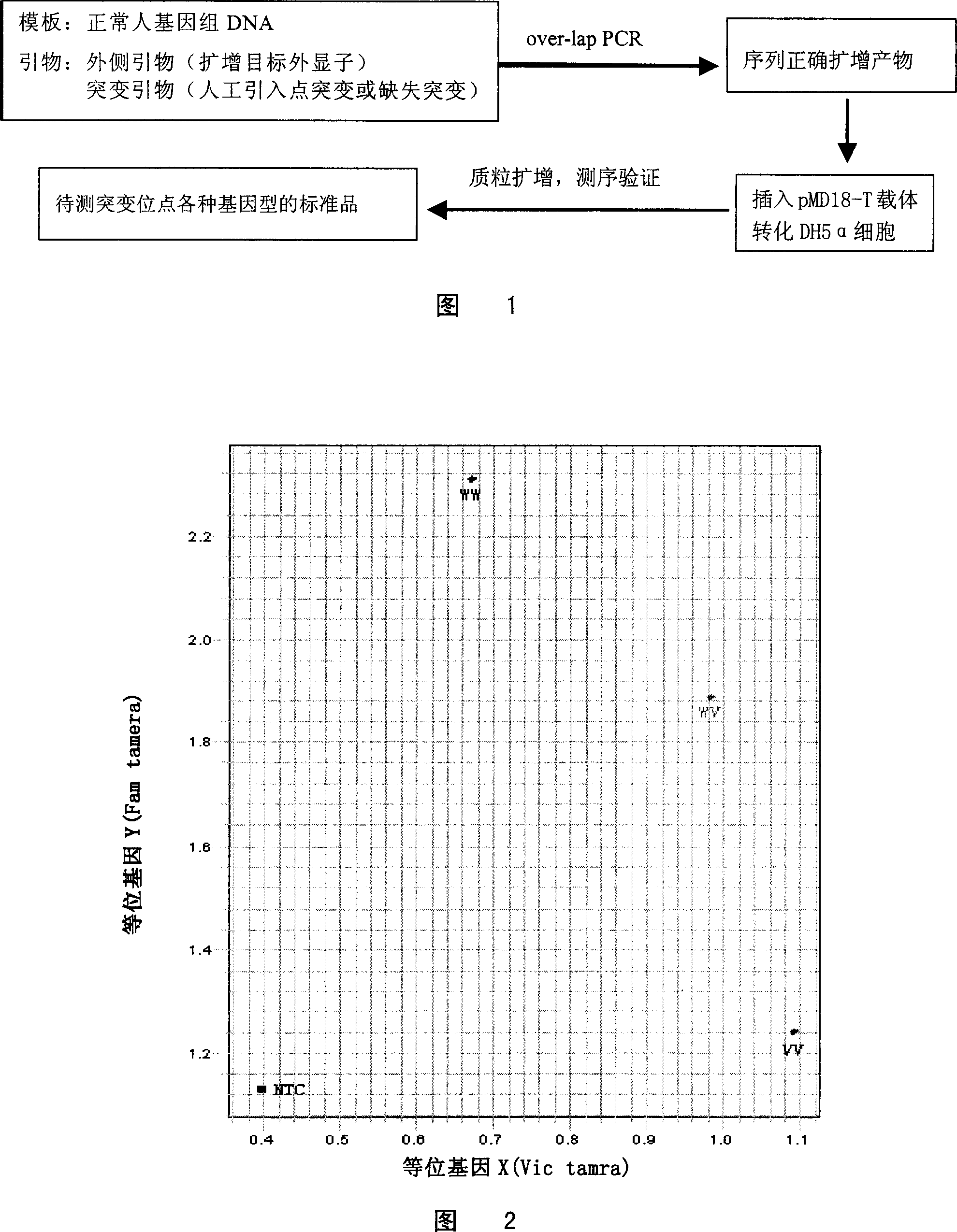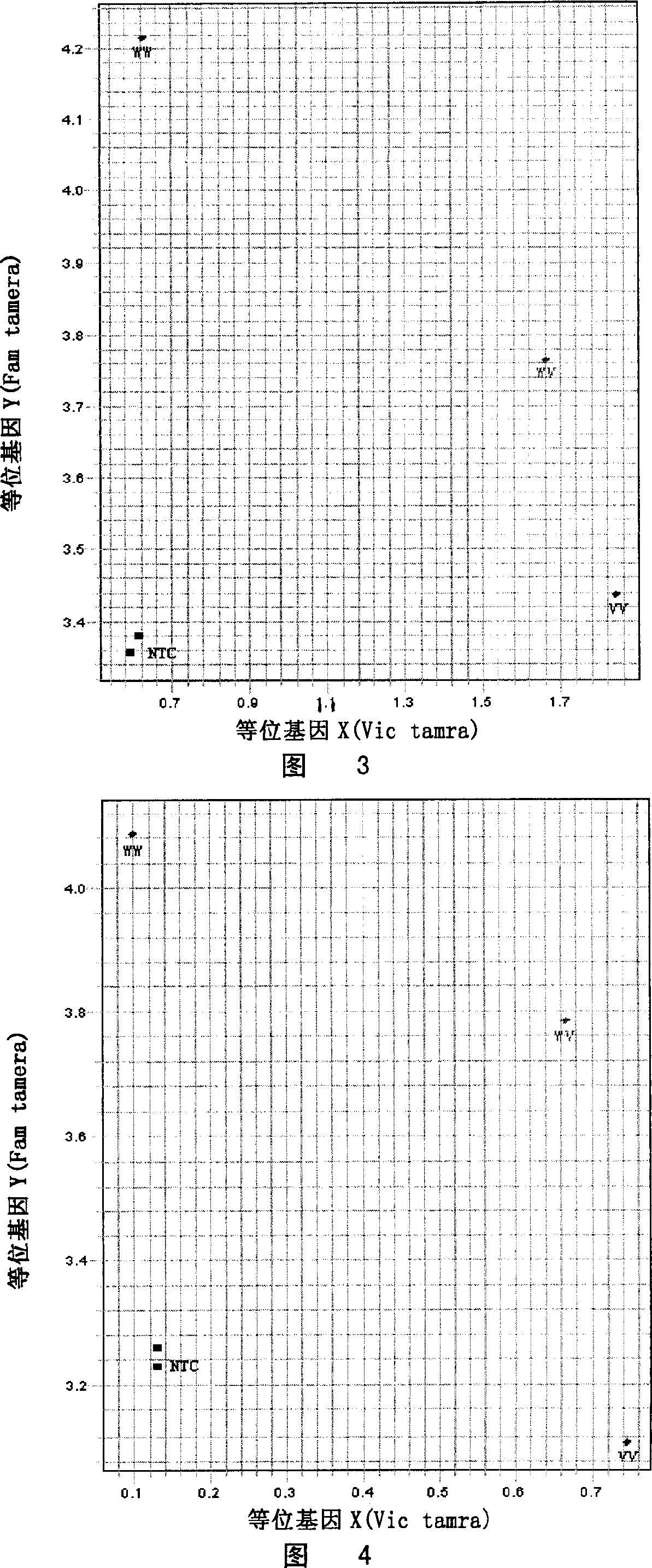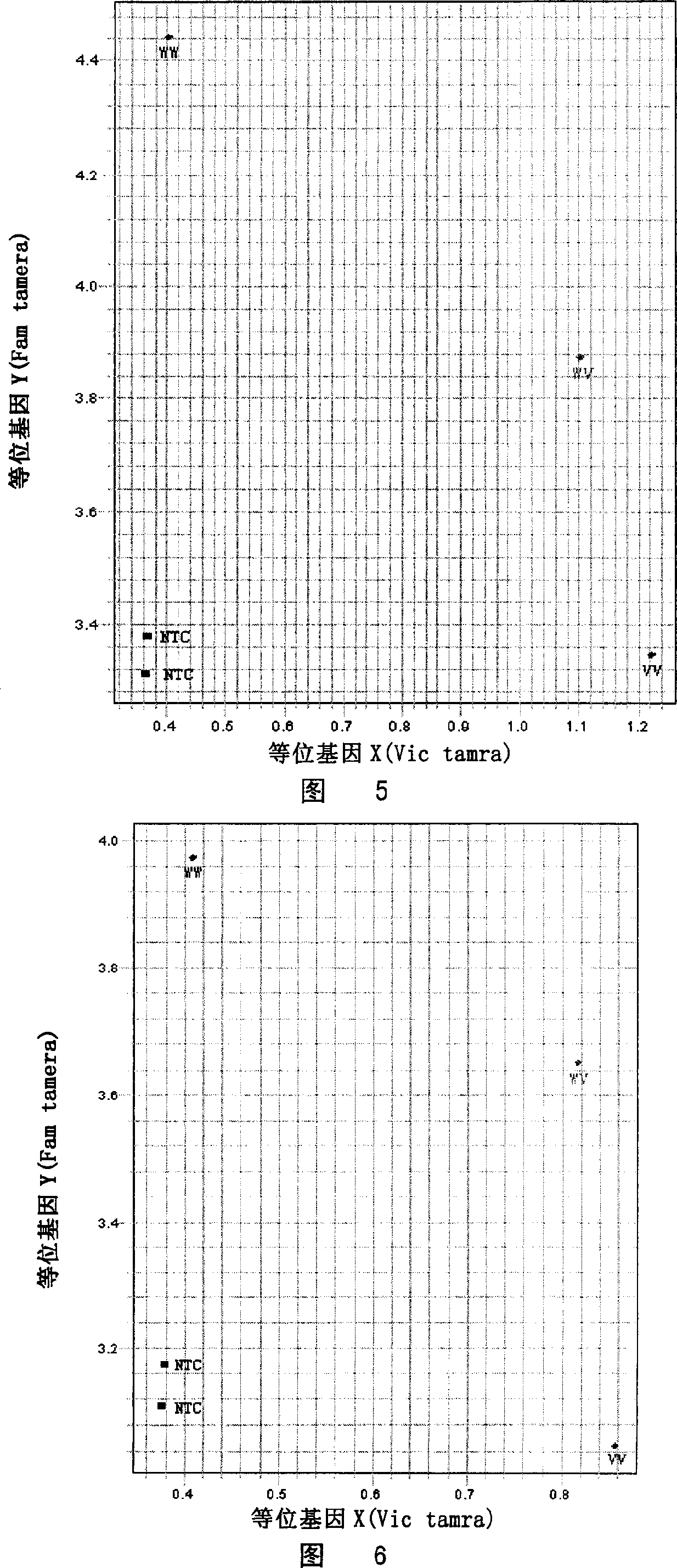Quick detecting gene mutation correlative to curative effect of non small-cell carcinoma of the lung
A non-small cell lung cancer, curative effect technology, applied in the field of biotechnology and medicine, can solve the problems of expensive equipment, high technical requirements, and difficulties in clinical widespread application
- Summary
- Abstract
- Description
- Claims
- Application Information
AI Technical Summary
Problems solved by technology
Method used
Image
Examples
Embodiment 1
[0104] Example 1 Determination of the EGFR mutation site to be detected
[0105]According to relevant research reports on EGFR mutations in NSCLC patients (Mu XL et al., Gefitinib-sensitive mutations of the epidermal growth factor receptor tyrosine kinase domain in Chinese Patients with non small cell lung cancer. Clin Cancer Res 2005; 11(12): 4289-4294; ZhangXT et al., The EGFR mutation and its correlation with response of gefitinib in previously treated Chinese patients with advanced non-small-cell lung cancer. Annals of Oncology Advance Access, 2005. doi: 10.1093 / annonc / mdi340; Qin BM et al., Identification of EGFRkinase domain Among lung cancer patients in China: implications for targeted cancer tberapy. Cell Research, 2005.15(3): 212-217; Huang SF et al., High Frequency of Epidermal Growth Factor Receptor Mutations with Complex Patterns in Non-Small Cell Lung Cancers Related to Gefitinib in Responsive .Clinical Cancer Research, 2004.10 (12): 8195-8203) and the inventor's ...
Embodiment 2
[0110] Embodiment 2 detection method design and the synthesis of primer and probe
[0111] For the selected 7 EGFR mutation sites, use Primer Express V2.0 software (product of Applied Systems, USA) to design 3 pairs of PCR primers (respectively amplify the mutation regions in the three exons) and 10 TaqMan Probes (combined into 7 pairs, wherein the wild-type detection probe in the exon 19 mutation region is shared by the 5 deletion mutations). The 5' end of the wild-type allele-specific probe was labeled as FAM, the 5' end of the mutant allele-specific probe was labeled as VIC, and the 3' end quencher of all probes was TAMRA. All primers and probes were synthesized by Shanghai Jikang Biotechnology Co., Ltd.
[0112] See Table 2 for details.
Embodiment 3
[0113] Example 3 Construction and preparation of various genotype standards for mutation sites to be detected
[0114] Using the normal human genomic DNA sequence as a template, design a pair of outer primers and a pair of mutation primers (introducing point mutations or deletion mutations) that can amplify the target exon region for each mutation site or deletion site to be tested. The method of overlapping PCR (over-lap PCR) was used for PCR amplification.
[0115] The specific mutation primers and related information are shown in Table 3.
[0116] After the final amplified product with the correct sequence verified by sequencing was ligated with the pMD18-T vector (purchased from TaKaRa Company) (that is, the sequence was ligated into the multiple cloning site of the pMD18-T vector by conventional means), it was transformed into DH5α Competent cells, after incubation, pick monoclonal colonies and continue to culture, amplify, extract plasmids, and perform sequencing verifi...
PUM
 Login to View More
Login to View More Abstract
Description
Claims
Application Information
 Login to View More
Login to View More - R&D
- Intellectual Property
- Life Sciences
- Materials
- Tech Scout
- Unparalleled Data Quality
- Higher Quality Content
- 60% Fewer Hallucinations
Browse by: Latest US Patents, China's latest patents, Technical Efficacy Thesaurus, Application Domain, Technology Topic, Popular Technical Reports.
© 2025 PatSnap. All rights reserved.Legal|Privacy policy|Modern Slavery Act Transparency Statement|Sitemap|About US| Contact US: help@patsnap.com



